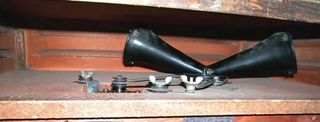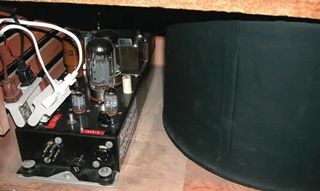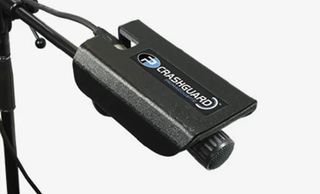If you plan to use a real Leslie live, you'll need use a studio microphone, unless it's a high-powered model (like the 3300 of today) and/or you’re not competing with other loud instruments. Vintage models almost always need help. Here’s what I’ve learned about cutting through clearly and without feedback.
Two Up, One Down...

The classic technique angles a mic on either side of the treble rotor, barely sticking into the opening left by removing the Leslie’s top rear panel. You can pan these hard left and right, but try a more moderate pan like nine and three o’clock. One mic (often a larger-diaphragm model than the treble mics) points at the bass rotor below and is panned center.
- The best MIDI keyboards for beginner and pro musicians
- Best synthesizers: keyboards, module and semi-modular synths
- Best pianos: acoustic and digital pianos for beginners and pros
- Best acoustic pianos: budget to premium instruments for home and studio
... or not
As sexy as stereo is, every open mic onstage increases the chances of feedback. On especially crowded stages, try just one mic up top. You can still pan it and the bass rotor’s mic subtly in opposite directions for a bit of widening.

Axis powers
If the bass mic is facing directly at the rotor (if you can draw an imaginary straight line between the top of the mic and the rotor’s spindle), you may hear exaggerated volume modulation in the form of a wub-wub-wub quality. Since this isn’t dubstep, try angling the mic off-axis to smooth out the sound.
Crossing over
To minimize bleed and feedback, EQ the mics to pick up only what they need. The crossover point between a Leslie’s bass and treble is 800Hz. If your mixer has a parametric mid-band, you can zero in on this. In any case, I turn the treble EQ almost all the way down on my bass mic and the bass EQ down on the treble mics. A low cut at 20–50Hz will reduce rumble and noises conducted through stage flooring.
Isolation salvation

Put the Leslie as far from drums, amps, and monitors as possible. If there’s a place you can put it off stage, do so (be prepared with a long Leslie cable) and rely on your monitors. If that place is a corner, store gig bags there to act as impromptu bass traps. Always orient the Leslie so that the mics aren’t pointing at other instruments—don’t use the Leslie as a baffle between mics and stage. Primacoustic Crash Guards (shown above) are meant to reduce cymbal bleed into snare drum mics, but help out on Leslies as well.
Use windscreens
Live, you need to get close to the drivers, so again, you’ll be pointing mics in the top and bottom openings of the “ugly side,” not outside the louvers as you might for recording. Those rotors displace a lot of air, especially at fast speed and especially if the bass rotor is missing its fabric covering (it really should have one). ’Nuff said.
Go dynamic

Forget studio condensers for live use. Look for dynamic mics with cardioid or hypercardioid patterns. Though marketed for kick drum, the Audix D6 (centre) is a great choice for the bass rotor. The Audix i5 (left) or new Lewitt MTP-440DM (right) work well on the treble. A tried-and-true combo is Shure SM57s up top and a Sennheiser MD-421 down below.
